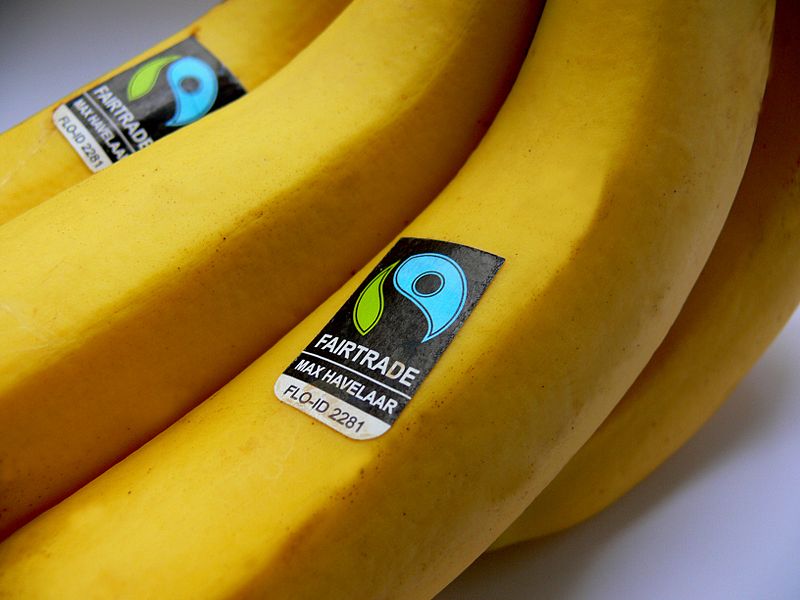
Technical Manual: Implementing Fairtrade Standards in Your Business
The benefits of international trade are evident, but we must also consider the risks in international trade, such as exchange rate volatility, which can significantly impact commercial transactions. For this reason, many companies need to adapt their product or presentation to fit target markets. In this practical guide, we will analyze how to understand the behavior of your importers to maximize your opportunities in the international market and develop a sustainable export strategy.
Did you know that expanding a business into international markets can be a powerful growth strategy, but it also involves significant risks in international trade?
International trade plays a fundamental role in the global economy, serving as a key driver for countries' development. However, before launching a product in another country, it is essential to conduct a thorough market analysis to assess its commercial viability.
In our experience, understanding what international trade is goes beyond knowing theoretical definitions. It’s about recognizing that the same product can have different meanings, uses, or levels of acceptance depending on the country. Additionally, the import and export of products drive growth by expanding markets, providing access to new customers, and increasing production.
Know Your Ideal Importer
Selecting the right importer is a crucial strategic decision for any international trade operation. After all, in a foreign country, your company will be defined by who your importer or distributor is.

Identifying the Type of Company That Imports Your Product
In international trade, there are primarily three types of importers based on their commercial objectives:
- Input Optimizers: Companies that seek optimal inputs from different countries to direct them to their internationally distributed production points.
- Opportunists: Businesses that identify products with potential to import and sell profitably to local customers.
- Arbitrage Seekers: Those looking for higher profitability at lower costs, prioritizing quality at the lowest price.
Likewise, each type of importer has particular characteristics that determine their compatibility with your products. Therefore, before starting any negotiation, you must verify whether the importer has the necessary registration to operate legally in international trade.
Analyzing Their Size, Location, and Sector
While it might seem logical to always seek the largest importer, it’s not always the best option. In many cases, a specialized mid-sized company can offer greater dedication and focus than a large conglomerate.
The intermediary’s experience and tenure are key indicators that reveal their market knowledge and ability to face the challenges of international trade. A more experienced importer will generally have better connections with distribution channels and an understanding of local customs procedures.
Understanding Their Needs and Expectations
The process begins with identifying the importer’s specific needs: what assets they will import, from where, and from whom. Subsequently, a supplier evaluation is conducted to assess their ability to comply with required regulations and standards.
It is crucial to understand that importers need services such as planning, proper labeling, efficient transportation, storage, customs management, and various activities that enhance customer service quality. Additionally, cultural factors and the alignment between your business philosophy and the importer’s will largely determine the success of your commercial relationship.
Tools to Analyze Their Behavior
To make strategic decisions in international trade, we need tools that provide concrete data on the behavior of potential importers. Fortunately, various resources facilitate this analysis.
Using Foreign Trade Databases
Specialized databases are the starting point for any international market analysis. Datacomex offers detailed information on Spanish foreign trade by products, countries, and autonomous regions, with updated customs data. On the other hand, ESTACOM from ICEX allows real-time consultation of Spanish export and import statistics based on value, weight, and units.
TradeMap also stands out as an essential tool, providing detailed information on trade flows in over 220 countries and 5,300 products, helping identify competitors and opportunities in potential markets.
Interpreting Import/Export Data
Statistical analysis is a fundamental tool for selecting international markets. Three key aspects to consider are:
- Market openness (markets open to importing specific products)
- Volume (the larger the volume, the more commercialization options)
- Trends (a three-year comparison to determine market maturity or growth)
Behavior Analysis on B2B Marketplaces
Marketplaces are an ideal low-risk testing strategy, considering that 98% of online buyers already use these platforms. They provide quick access to international consumers, analytical data on purchasing behavior, and the ability to test products without needing your own infrastructure.
Factors Influencing Their Purchasing Decisions
A deep understanding of the factors influencing your potential importers’ decisions is crucial for developing effective commercial strategies in international trade.
Price and Commercial Terms
Price is the most influential factor in purchasing decisions for 57% of buyers. However, importers conduct a cost-benefit analysis, evaluating not only direct price but also logistical, customs, and operational costs. Exchange rate fluctuations significantly impact these decisions, especially when the dollar strengthens against other currencies.
Supplier Reputation and Certifications
Having the right commercial partner ensures quality, compliance with deadlines, and competitiveness. Companies evaluate factors such as reliability, certifications, and prior experience through scoring systems and comparative performance analysis. Additionally, maintaining rigorous cold chains is essential for sensitive products like food and medicine.
Delivery Times and Logistics
Transit time significantly impacts the planning and execution of commercial operations. Delays can affect profitability and global competitiveness, so importers highly value delivery time accuracy. Longer transit times also mechanically require greater inventory commitments.
International Market Trends
Intraregional economic activity, international commodity prices, and exchange rate fluctuations notably influence decisions. Currently, digitalization is a dominant force, driving e-commerce and technologies like artificial intelligence to optimize supply chains.
Cultural and Communication Factors
Cultural backgrounds serve as a compass guiding purchasing decisions. In collectivist societies like Japan, products emphasizing group harmony are in higher demand, while in individualistic cultures like the U.S., self-expression is valued. Therefore, effective communication adapted to each cultural context is essential for building lasting business relationships.
How to Validate and Adapt Your Export Strategy
Once potential importers are identified, validating our strategy before committing significant resources is essential in the international market.
Conducting Pilot Tests with Importers
Pilot tests allow evaluating the feasibility of exports under real conditions. Documented experiences show these initial trials help identify operational obstacles and optimize customs processes. They also facilitate adaptation to market-specific technologies, such as automated radiofrequency lanes.
Adjusting Your Value Proposition Based on Feedback
Feedback from real customers minimizes risks and increases confidence in your value proposition. To gather it, we can implement:
- Online surveys using tools like SurveyMonkey
- Focus groups with potential importers
- A/B testing to validate different commercial messages
Measuring Repurchase Rate and Satisfaction
The repurchase rate measures the percentage of customers making multiple purchases, serving as a key loyalty and retention indicator. To calculate it, divide the number of repeat customers by the total number of customers. A high rate indicates satisfaction with products, services, and overall experience.
Establishing Long-Term Relationships
Building lasting relationships requires selecting partners who share values and objectives, through:
- Clear agreements on quality standards and deadlines
- Constant and honest communication
- Two-way feedback mechanisms
Undoubtedly, maintaining these relationships strengthens our position in international trade, ensuring sustainable growth.

Conclusion
A detailed analysis of importers’ behavior is essential for any company seeking success in international trade. Without a doubt, understanding who our commercial partners are, their specific needs, and the factors influencing their decisions positions us favorably in an increasingly competitive global market.
Additionally, we’ve identified that elements like price, supplier reputation, delivery times, and market trends decisively influence purchasing preferences. While each market has unique aspects, building strong relationships based on trust and effective communication is the foundation of sustainable success.
Finally, validating our strategy through pilot tests and adapting it based on feedback allows us to align our value proposition with the market’s real expectations. This way, we can build lasting commercial relationships that generate mutual benefits and strengthen our international presence.
International trade, far from being merely a product exchange, represents an opportunity to create meaningful connections that transcend borders and cultures. Thus, analyzing and understanding our importers’ behavior is not just a commercial strategy but the key to developing a truly global and resilient business model.










